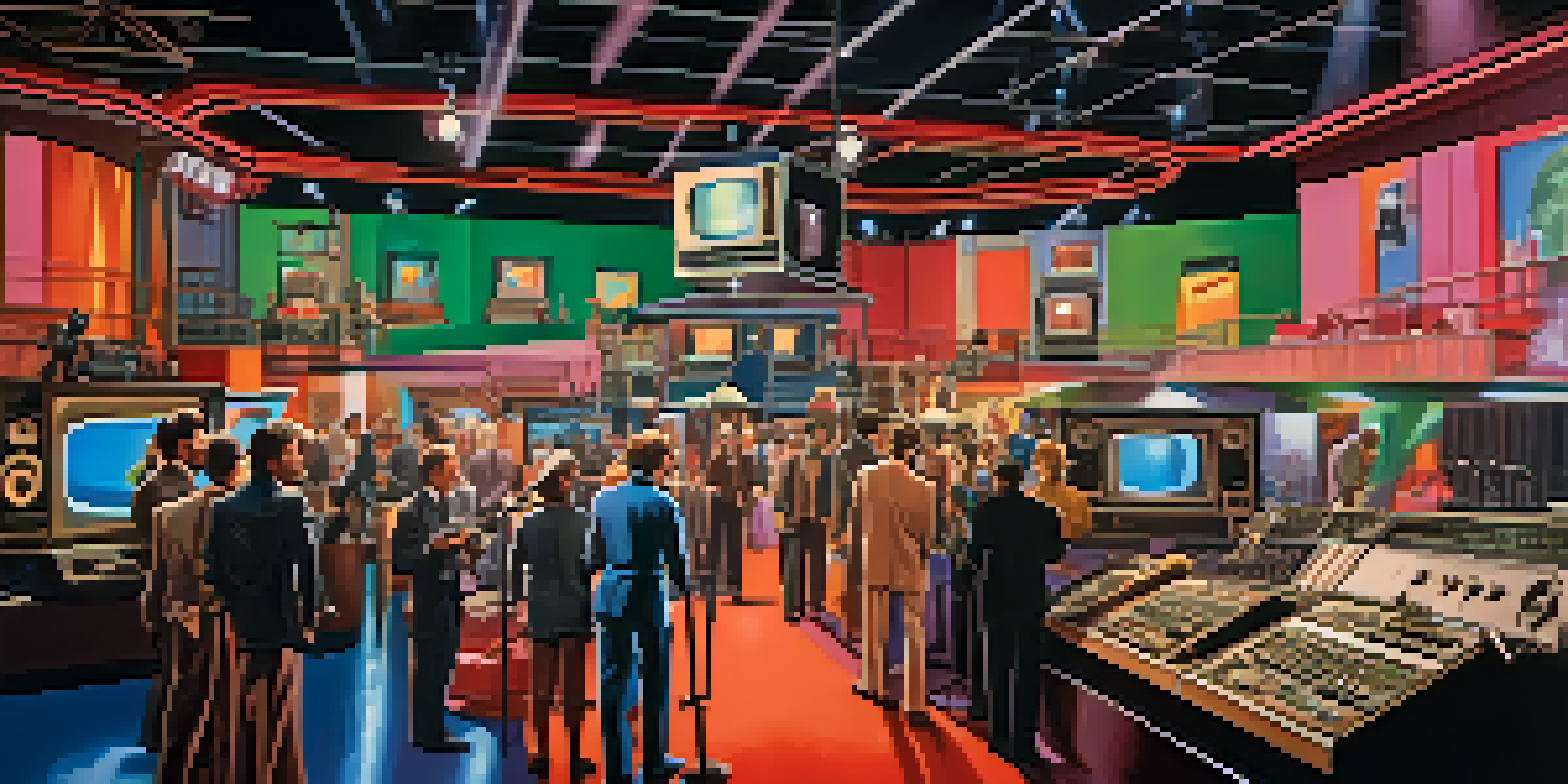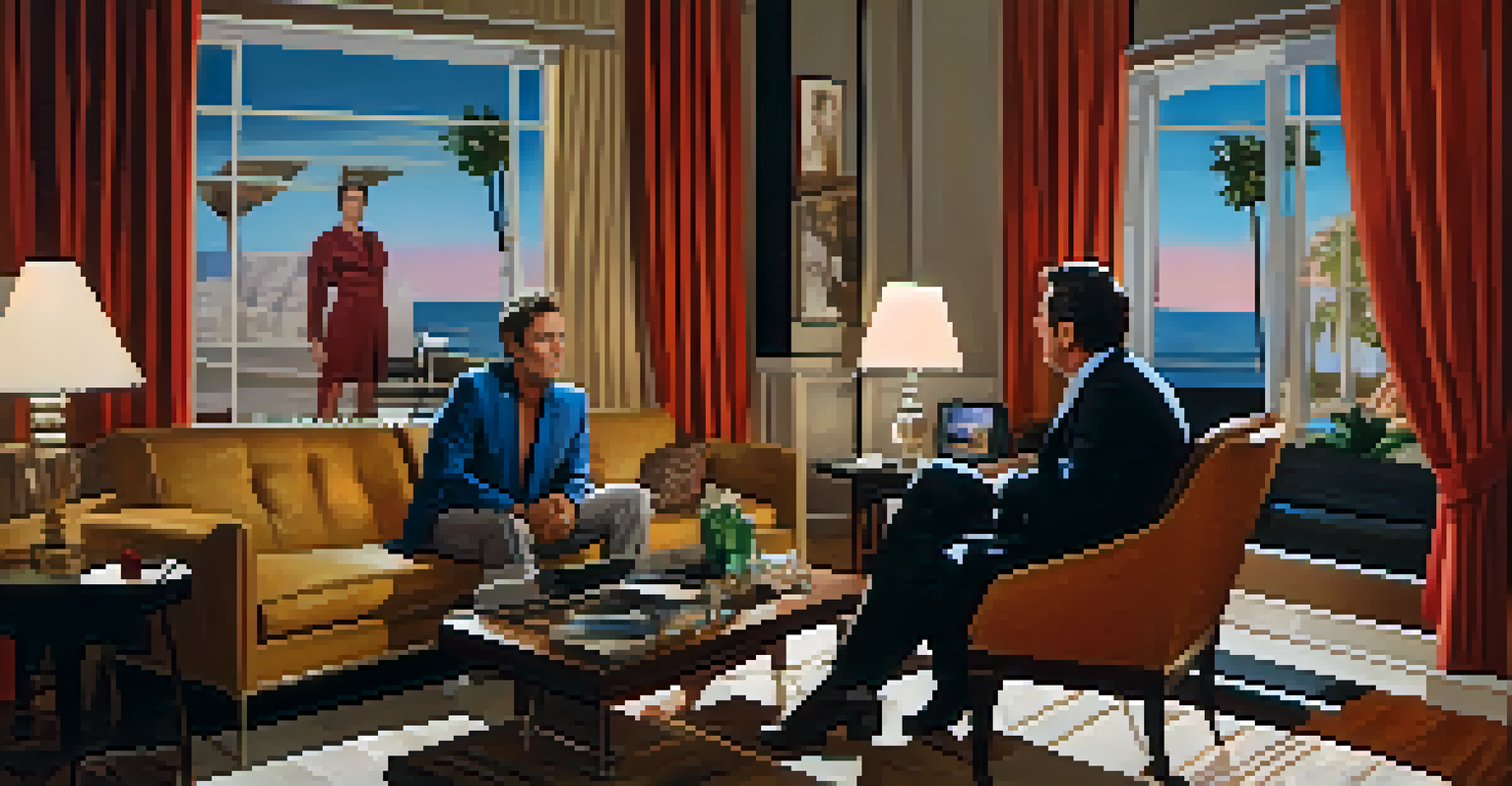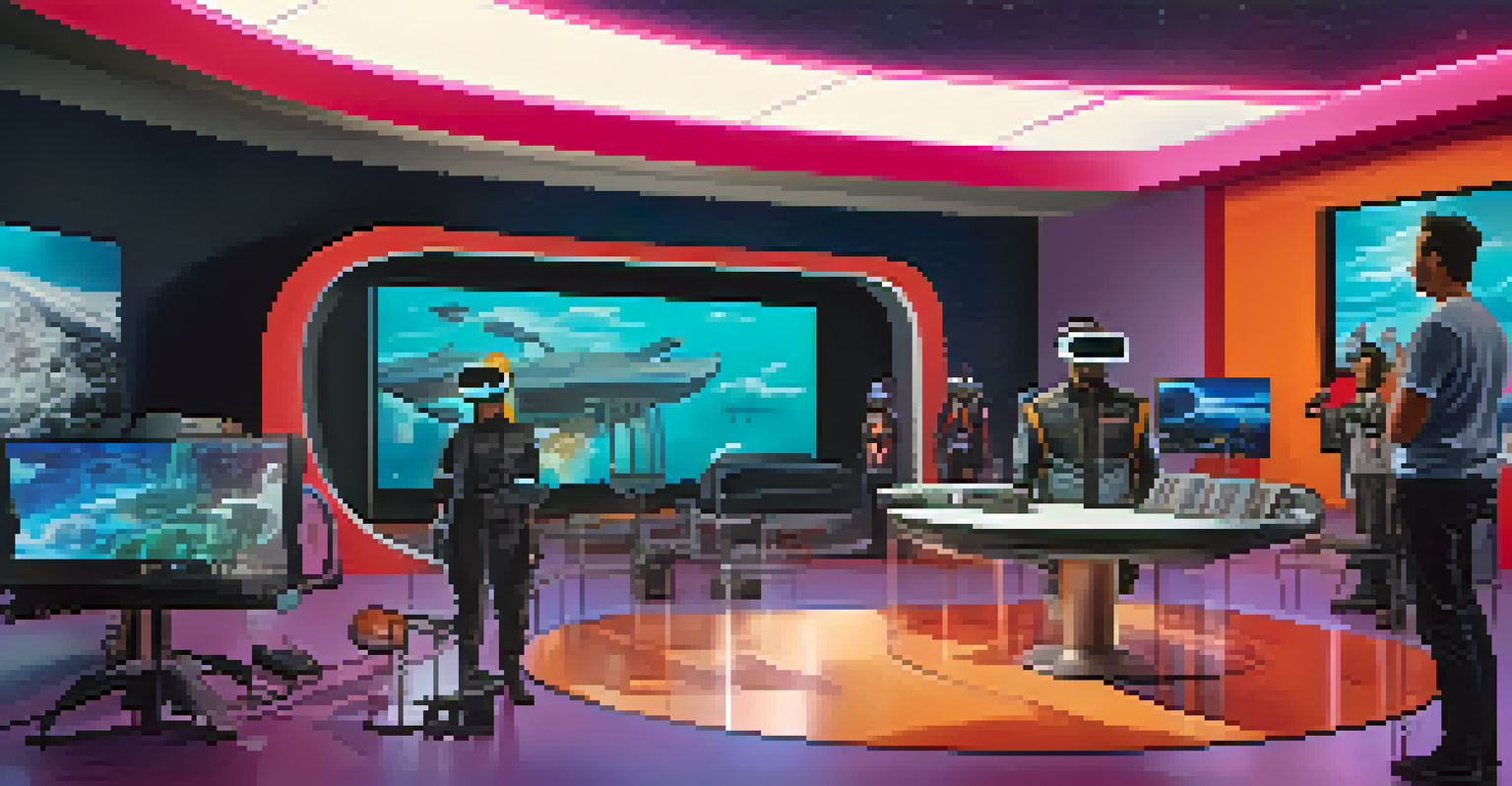The Cross-Pollination of Film and Television Industries

The Evolution of Film and Television: A Shared Journey
Film and television have a long history of evolving together. In the early days, both mediums were closely tied, often sharing talent and storytelling techniques. As technology progressed, the lines between them began to blur, leading to a rich tapestry of influences and collaborations that shape today’s entertainment landscape.
Television is a powerful medium for storytelling; it allows for deeper character development and complex narratives that can unfold over time.
For instance, the rise of cable networks in the 1980s and 90s introduced diverse storytelling styles that borrowed heavily from cinematic techniques. This shift encouraged filmmakers to explore longer narratives in the form of miniseries or limited series. The result was an expansion of creative possibilities, allowing both industries to thrive.
Today, we see big-name directors and actors frequently crossing over between film and television. This mutual influence not only enriches the content but also attracts diverse audiences, creating a comprehensive entertainment experience that appeals to a broader demographic.
Shared Talent: Actors and Directors Crossing Boundaries
One of the most visible signs of cross-pollination is the movement of actors and directors between film and television. A-list actors, once reserved for the silver screen, now headline television series, proving that compelling storytelling can thrive in any format. For example, actors like Matthew McConaughey and Nicole Kidman have found critical success in television after illustrious film careers.

Directors are also making their mark on television, bringing cinematic flair to episodic storytelling. The work of directors like David Fincher and Martin Scorsese in series like 'Mindhunter' and 'Vinyl' demonstrates how film techniques can elevate television productions. This blending of styles enhances the viewing experience, making shows feel more polished and engaging.
Film and TV: A Shared Evolution
Film and television have evolved together, influencing each other through shared talent and storytelling techniques.
Furthermore, this trend has opened doors for emerging talent, allowing new voices to be heard across both mediums. The result is a diverse array of stories that reflect a wide range of experiences and perspectives, enriching the cultural landscape.
Narrative Techniques: Blending Storytelling Styles
Both film and television have unique storytelling techniques, but the lines are increasingly blurred. Television has embraced cinematic storytelling methods, with intricate plots and character development that mirror feature films. This change allows for deeper emotional connections with characters over multiple episodes, as seen in shows like 'Breaking Bad' and 'Game of Thrones.'
The best stories are those that transcend their medium, connecting with audiences in a way that resonates on a personal level.
Conversely, film has begun to adopt episodic narratives, leading to the rise of franchise storytelling. Movie series like the Marvel Cinematic Universe (MCU) have capitalized on this trend, creating interconnected stories that keep audiences engaged across films and streaming series. This strategy not only maximizes viewer investment but also creates a larger universe of story possibilities.
As a result, viewers are treated to a richer narrative experience that transcends traditional formats. This evolution demonstrates that whether through a two-hour film or a ten-episode series, storytelling can adapt to meet audience expectations in innovative ways.
Technological Advances: Shaping Both Industries
Technology has been a driving force behind the evolution of both film and television. Innovations such as high-definition video and streaming platforms have transformed how content is created and consumed. The rise of platforms like Netflix and Amazon Prime has not only changed viewing habits but also influenced production techniques across the board.
For instance, the use of virtual reality (VR) and augmented reality (AR) is beginning to shape storytelling in both mediums. These technologies offer immersive experiences that can draw viewers into the narrative, blurring the lines between passive watching and active participation. As both industries explore these advancements, the potential for creative storytelling grows exponentially.
Blending Storytelling Techniques
Both mediums are increasingly adopting each other's narrative styles, enriching viewer experiences with deeper emotional connections.
Moreover, the accessibility of filmmaking tools has democratized content creation. Aspiring filmmakers can now produce high-quality content with minimal resources, leading to a surge of innovative storytelling. This shift not only diversifies the types of narratives being told but also encourages collaboration across both film and television sectors.
Cultural Impact: Reflecting Society Through Dual Lenses
The cross-pollination of film and television also reflects broader societal changes. Both mediums serve as mirrors to our culture, addressing pressing issues and diverse perspectives that resonate with audiences. Shows and films often tackle social justice themes, mental health, and identity, leading to meaningful conversations in society.
For instance, series like 'The Handmaid’s Tale' and films such as 'Parasite' challenge viewers to confront uncomfortable truths about societal structures. By blending cinematic storytelling with television's episodic format, these narratives can explore complex themes in greater depth, encouraging ongoing dialogue beyond the screen.
As audiences seek content that resonates with their experiences, the impact of these narratives becomes even more significant. The collaboration between film and television allows for a richer exploration of cultural themes, making it essential for both industries to continuously evolve in response to societal needs.
Audience Engagement: Building Communities Around Content
The interaction between film and television has also shaped how audiences engage with content. Social media platforms have become vital in building communities around both films and series, allowing fans to connect, share, and discuss their favorite shows and movies. This engagement creates a communal experience that enhances viewer loyalty and investment.
Events like Comic-Con and film festivals celebrate this convergence, bringing together fans from both industries. These gatherings foster excitement and anticipation for upcoming releases, creating buzz that can elevate a show or film's profile. They also provide a space for creators to interact with their audience, forging deeper connections.
Technology's Role in Transformation
Technological advancements, including streaming and immersive experiences, are reshaping how content is created and consumed across film and television.
As the lines blur further between film and television, audience engagement will continue to evolve. The rise of interactive content and viewer participation will likely shape future storytelling, paving the way for even more dynamic relationships between creators and their audiences.
The Future: What Lies Ahead for Film and TV
Looking ahead, the future of film and television seems promising as the cross-pollination continues to thrive. With advancements in technology and shifting viewer preferences, both industries will likely adapt and innovate in ways we can't yet imagine. The blending of storytelling formats will continue to push boundaries, creating new opportunities for creators.
Moreover, as global audiences become more interconnected, we can expect to see a greater influence of international storytelling. Diverse narratives from around the world will enrich both film and television, allowing for a more comprehensive understanding of the human experience. This globalization of content will only enhance the creative landscape.

Ultimately, the collaboration between film and television will lead to a vibrant future where storytelling knows no bounds. As creators continue to experiment with formats and techniques, audiences will be treated to an ever-evolving tapestry of stories that entertain, inspire, and provoke thought.